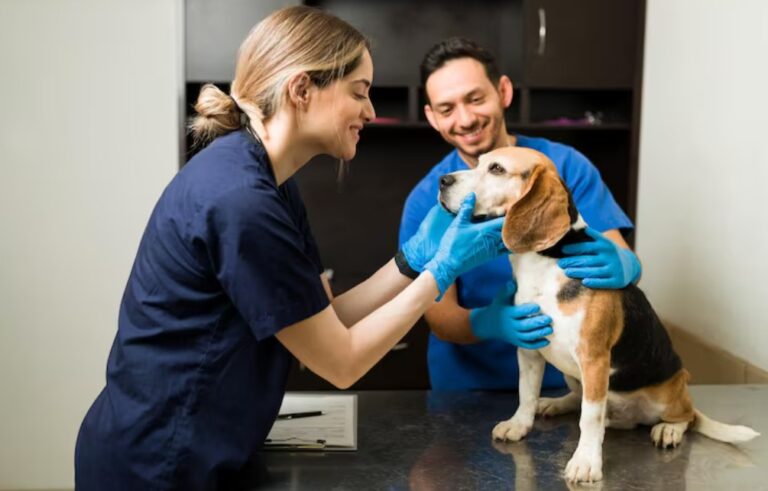
Just as Odysseus found his way back home after years of wandering, microchipping ensures your furry companion can always find their way back to you.
You’ve made the smart choice to microchip your dog, but registering and updating that tiny device is crucial to its effectiveness.
You’ll need your dog’s microchip number, which is easier to find than you might think.
Registering the microchip with your current contact information, and keeping it updated, is the next step to ensure a happy reunion, should you and your pet ever be separated.
Let’s explore how to secure this peace of mind, shall we?
Understanding Dog Microchips
Understanding dog microchips is a crucial first step toward ensuring your furry friend’s security and swift recovery should they ever go missing. A dog microchip is a tiny electronic device, about the size of a grain of rice, that’s implanted under your dog’s skin, usually between the shoulder blades. This procedure is quick, relatively painless, and can be performed during a routine vet visit.
Each microchip contains a unique identification number that’s registered in a database with your contact information. It’s essential to know that a microchip isn’t a GPS device; it doesn’t track your pet’s location. Instead, when a lost dog is found and brought to a shelter or veterinary office, a special scanner is used to read the microchip’s unique ID number. This number is then entered into the database to retrieve the owner’s contact information, making it possible to reunite you with your pet.
To maximize the benefits of microchipping, you must register the microchip and keep your contact information up to date. This ensures that should your pet ever get lost, you can be contacted immediately once their microchip is scanned and identified.
Finding Your Dog’s Microchip Number
Before you can update your contact information, you’ll need to locate your dog’s microchip number, a crucial step in ensuring their safety. The microchip is a tiny device, about the size of a grain of rice, implanted beneath your dog’s skin, usually between the shoulder blades. This unique identifier can be the key to reuniting with your pet if they ever get lost.
To find the microchip number, you’ll first need to have your dog scanned by a veterinarian or at a local animal shelter. Most places use a universal scanner, capable of reading microchips from various manufacturers. Once scanned, the microchip emits a unique identification number, displayed on the scanner’s screen.
If your dog was microchipped at a shelter or a breeder before you adopted them, they should have provided you with the microchip number and the company’s name. It’s essential to keep this number in a safe place. However, if you’ve misplaced it, don’t worry. A quick scan by a professional can retrieve this number for you.
Registering Your Dog’s Microchip
Once you’ve located your dog’s microchip number, it’s essential to register it with a reputable pet recovery database to ensure they can always find their way back to you. This critical step is the bridge between finding a lost dog and reuniting them with their family. You’ll need to choose a database that’s widely recognized and has a strong track record of successful pet recoveries. Common options include the national database maintained by the microchip manufacturer or a trusted third-party registry.
When registering your dog’s microchip, you’ll be asked to provide your contact information, including your name, address, phone number, and possibly an email address. It’s crucial to enter this information accurately to facilitate a quick reunion if your dog is lost. Some databases also allow you to upload additional details about your dog, such as their photo, veterinary contact information, and any special care instructions. This can be invaluable for anyone who finds your dog and wants to ensure their safety and well-being until they’re returned to you.
Updating Microchip Information
Keeping your dog’s microchip information current is crucial for ensuring their safety and your peace of mind. Once your dog’s microchip is registered, remember that any change in your contact details or living situation necessitates an update to this information. Typically, you can update the microchip details through the registry’s website where your dog’s chip is registered. You’ll need the microchip number and, in some cases, a password or PIN you set up during the initial registration.
Start by logging into the microchip registry’s website. If you’ve forgotten your login details, there’s usually a way to recover them through your email address. Once logged in, look for an option to ‘Update Information’ or ‘Edit Profile’. Enter your new contact details, such as address, phone number, and email. Some registries also allow you to update emergency contacts or add additional information, like your vet’s contact details.
After submitting the changes, ensure you receive a confirmation, either on-screen or via email. This confirmation is your assurance that the update is complete and your dog’s microchip information is now current. It’s a straightforward process, but it’s a critical step in safeguarding your pet.
Tips for Maintaining Microchip Details
To ensure your dog’s safety, regularly review and update their microchip information for accuracy and completeness. This is crucial in the event they ever get lost, as it significantly increases the chances of a happy reunion.
Firstly, make it a habit to check the microchip details annually, perhaps around the time of your dog’s annual health checkup or vaccination. This way, it’s easier to remember and becomes part of your routine dog care.
If you move house, change your phone number, or there’s any change in emergency contacts, update this information promptly. Delays can lead to complications should your dog go missing during this time.
Moreover, ensure that the microchip’s registration is in your name and not left under a breeder, previous owner, or shelter. This common oversight can cause confusion and delay when trying to recover a lost pet.
Lastly, choose a microchip registry that offers online access, allowing you to update your dog’s details easily whenever necessary. Many registries also offer additional services such as lost pet alerts that can further aid in the quick recovery of your dog.








